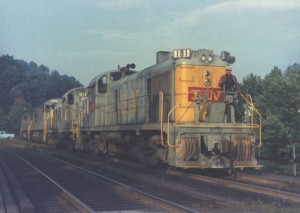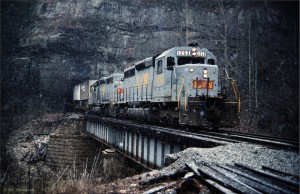
Track Plans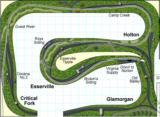 L&N Track Plans L&N Track Plans |
Photos | Models |
History
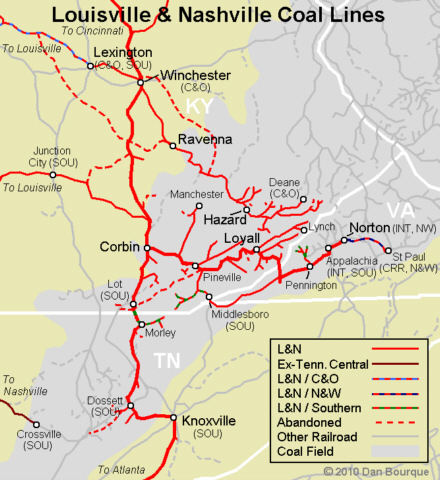 The Louisville and Nashville was originally formed in 1850 by the state of Kentucky, and in the 132 years it existed as a separate company, it operated nearly 7,000 miles of track throughout the south and midwest including the Appalachian coal fields of Eastern Kentucky and Tennessee. The L&N acquired the Nashville, Chattanooga and St. Louis (NC&StL) in 1957, part of the Chicago & Eastern Illinois (C&EI) in 1961 and the Monon in 1971, expanding their lines north and west. The L&N, along with its long-time competitor the Southern Railway, also purchased part of the Tennessee Central after it went bankrupt in 1968 adding one more avenue into the coal fields of Tennessee.
The Louisville and Nashville was originally formed in 1850 by the state of Kentucky, and in the 132 years it existed as a separate company, it operated nearly 7,000 miles of track throughout the south and midwest including the Appalachian coal fields of Eastern Kentucky and Tennessee. The L&N acquired the Nashville, Chattanooga and St. Louis (NC&StL) in 1957, part of the Chicago & Eastern Illinois (C&EI) in 1961 and the Monon in 1971, expanding their lines north and west. The L&N, along with its long-time competitor the Southern Railway, also purchased part of the Tennessee Central after it went bankrupt in 1968 adding one more avenue into the coal fields of Tennessee.
In 1971, the Seaboard Coast Line (SCL) gained a controlling interest in the L&N, though the L&N maintained its corporate identity. In the mid ’70s, the SCL began to increase the cooperation of its railroads (including the L&N and Clinchfield) under the Family Lines umbrella. Though the Family Lines was not a true railroad, all of the railroads began to paint their locomotives and rolling stock into the dark gray Family Lines scheme. Finally, on January 1st 1983, the L&N (along with the Clinchfield, SCL, Georgia RR, Atlanta & West Point and Western Railway of Alabama) were absorbed into the newly formed Seaboard System which itself became part of CSX a few years later.
Coal Lines and Operations
There were three major L&N coal-hauling divisions in the Appalachians: the Eastern Kentucky Division (or “EK”), the Cumberland Valley Division (“CV”) and the Knoxville and Atlanta Division (“K&A”). The Tennesse Central, most of which was purchased by the L&N, was a coal-hauling road as well, but it had abandoned most of its coal branches before the L&N purchase. In addition to the Appalachian fields, the L&N also hauled coal in the midwest and Alabama.
The Eastern Kentucky Division (later the EK sub of the Cincinnati Division), extended from Patio Yard at Winchester, KY into the rich coal fields of eastern Kentucky. The L&N and C&O actually served the same mine at Deane, KY, but it took the formation of CSX to actually join rails there. Major yards included Ravenna and Hazard with a smaller yards at Dent and Jackson. Most mine runs operated out of Hazard. Branches included the Leatherwood Branch, Rockhouse Creek Branch, Lots Creek Branch, Carr Fork Branch, Smoot Creek Branch and Sand Lick Branch. The EK featured several dozen loaders of all varieties from small truck dumps to flood loaders and the large “fast loader” at Haddix, KY. The EK also featured a helper district to get loaded coal trains up Elkatawa Hill between Hazard and Ravenna. Bright orange Detroit, Toledo and Ironton (DT&I) units were a common sight in Hazard in the 70s, and the EK also hosted the Southeast Coal Company’s (SECX’s) “green trains” which worked from south of Hazard to the prep plant at Calla, KY (between Ravenna and Winchester) beginning in 1979.
The Cumberland Valley Division (later the CV sub of the Knoxville Division), extended from the large yard at Corbin, KY on the Cincinnatti-Knoxville main to a connection with the Norfolk & Western at Norton, VA. The original CV mainline ran south to a connection with the Southern at Cumberland Gap near Middlesboro, KY and then east to Norton, but this line was “coal poor.” Later, the L&N pushed into the rich Harlan county coal fields from Pineville, KY and established its main yard and mine runs at Loyall. From there, the lines branched out to serve dozens of loaders along branches with great names including the Poor Fork Branch, Clover Fork Branch, Catrons Creek Branch and Crummies Creek Branch. The Martins Fork Branch south of Loyall eventually connected with the CV main at Smiley, VA via Hagans Tunnel and Hagans switchback on its way to a connection with its coal-hauling counterpart, the Clinchfield, but this project was never completed. The Martins Fork eventually replaced the original main as the new route to Norton, but the switchback remained, even though it required the doubling of trains and reassembling on the original main. On the way to Norton, the L&N and Southern met at Pocket, VA (north of Pennington) where they shared the St. Charles Branch and again at Appalachia, VA where both interchanged with the small Interstate Railroad. Most of the coal hauled through Appalachia was bound for the Clinchfield, but without a direct connection, the L&N interchanged their traffic with the Interstate at Dorchester Jct (just west of Norton) for the short trip to the Interstate’s connection with the Clinchfield at Miller Yard, VA. The L&N also delivered a healthy amount of non-coal freight to the N&W at Norton, VA, and after the Southern’s takeover of the Interstate in 1965, the L&N negotiated trackage agreements over the N&W’s line from Norton to a connection with the Clinchfield at St. Paul, VA starting in 1973 and lasting into the CSX era–this line was full of tall trestles and tight tunnels restricting the size of cars which could use this line. On the West (railroad North) end of the CV, the L&N served the busy Cumberland and Manchester Branch out of Corbin and the Straight Creek Branch out of Wallsend Yard (Pineville). In the early 70s, Penn Central power could be seen on the “Steel Trains” between Corbin and the large US Steel tipple at Lynch, KY, and beginning in 1979, the Oneida & Western’s (O&W’s) “green train” could be seen loading on the Cumberland and Manchester Branch.
The Knoxville & Atlanta Division (later the KD Sub of the Knoxville Division) was a major part of the L&N’s artery between Cincinnati and Atlanta. The K&A couldn’t measure up to the EK or CV for coal production, but it did host a number of tipples and a few coal branches. There were several loaders along the mainline south of Corbin, but the major coal branch on the K&A was the Clairfield Branch, shared with the Southern. The L&N’s mine runs were based out of LaFollette (south of Morley). The 70s saw a dramatic increase in mainline coal trains from the CV and EK heading south over the K&A, and a helper set was stationed at Chaska, TN (south of Morley) to help trains over the short grade, including the O&W “green train.”
In the diesel era, the L&N’s coal fields became a haven for the road’s Alcos. While just about any 4-axle locomotive could be seen on a mine run, the RS3s dominated followed by C420s and other assorted 4-axles such as RS36s from the Tennesse Central. The L&N’s small fleet of 6-axle C628s and C630s spent most of their time hauling coal trains in the coal fields alongside 6-axle U-boats, SD35s and SD40s. In the late ’70s, the coal boom left the L&N in need of power, and leased units were common and included Southern Pacific and Canadian National units. Adding to the colorful array were borrowed and “hand-me-down” units from the SCL and newly painted Family Lines locomotives, any of which could be found in the coal fields.
Related Products:
Sources:
- Louisville and Nashville in the Appalachians by Ron Flanary et al. Old Line Graphics
- wikipedia.org
For related information, see the Family Lines, Seaboard System and CSX pages





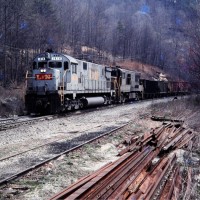 L&N Photos
L&N Photos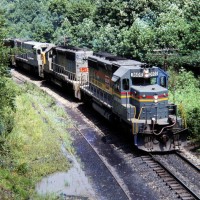 Family Lines Photos
Family Lines Photos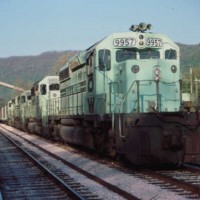 O&W Photos
O&W Photos SECX Photos
SECX Photos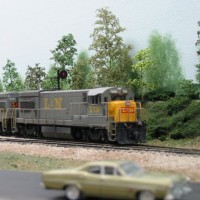 L&N Models
L&N Models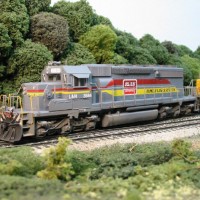 Family Lines Models
Family Lines Models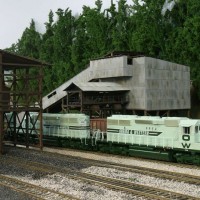 O&W Models
O&W Models SECX Models
SECX Models
